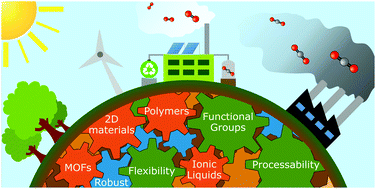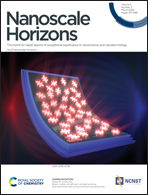Organic–inorganic hybrids for CO2 sensing, separation and conversion
Abstract
Motivated by the air pollution that skyrocketed in numerous regions around the world, great effort was placed on discovering new classes of materials that separate, sense or convert CO2 in order to minimise impact on human health. However, separation, sensing and conversion are not only closely intertwined due to the ultimate goal of improving human well-being, but also because of similarities in material prerequisites – e.g. affinity to CO2. Partly inspired by the unrivalled performance of complex natural materials, manifold inorganic–organic hybrids were developed. One of the most important characteristics of hybrids is their design flexibility, which results from the combination of individual constituents with specific functionality. In this review, we discuss commonly used organic, inorganic, and inherently hybrid building blocks for applications in separation, sensing and catalytic conversion and highlight benefits like durability, activity, low-cost and large scale fabrication. Moreover, we address obstacles and potential future developments of hybrid materials. This review should inspire young researchers in chemistry, physics and engineering to identify and overcome interdisciplinary research challenges by performing academic research but also – based on the ever-stricter emission regulations like carbon taxes – through exchanges between industry and science.



 Please wait while we load your content...
Please wait while we load your content...